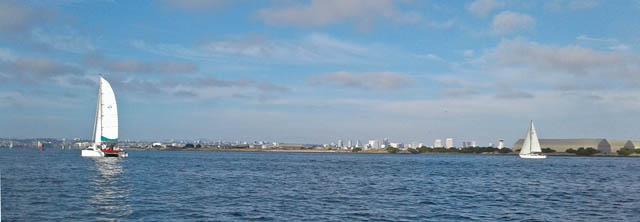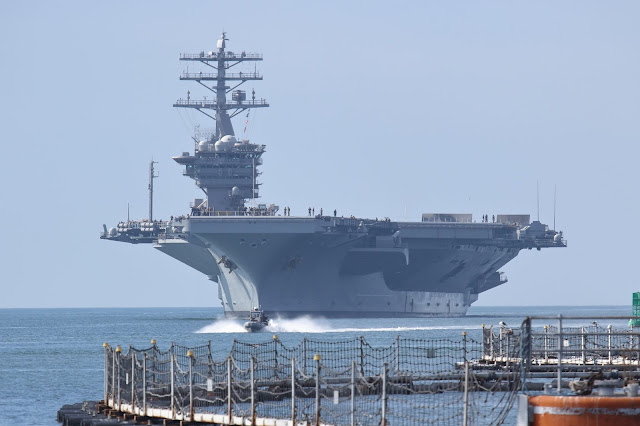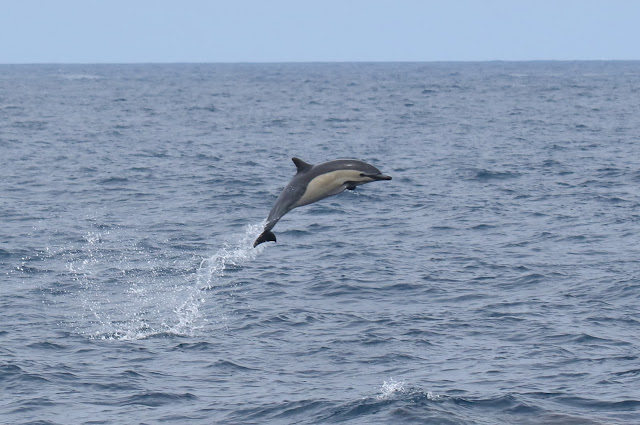So it was I found myself aboard the vessel Reel Science on July 21.
 |
| Marlene (left) and Kit (right) on the flying bridge. |
We escorted through the bay by a Bottlenose Dolphin.
As we were going out, the aircraft carrier Nimitz was coming in!
Just offshore, we passed the USS San Diego.
Nearing the Nine Mile Bank we found a large pod of Common Dolphins. This one made quite an impressive leap!
Soon we spotted Black Storm-Petrels. This is one of my better shots of this bird that doesn't approach too near the boats.
Another view.
The dark under wing linings of this black-and-white murrelet confirm its identity as Craveri's Murrelet.
There were many small patches of kelp paddies floating offshore. Nearly each one had an accompaniment of Red-necked Phalaropes, just back from nesting in the Arctic.
Closer to shore a Brandt's Cormorant flew near the boat.
Brown Pelicans were also common near shore and in the bay.
Elegant Terns were our companions throughout the trip.
 |
| Marlene found a comfortable perch to enjoy her day at sea. |
 |
| Passing out San Diego Bay in the morning always starts with a view of Point Loma |
 |
| Sailboat silhouette |
 |
| Sail boats in San Diego Bay |












